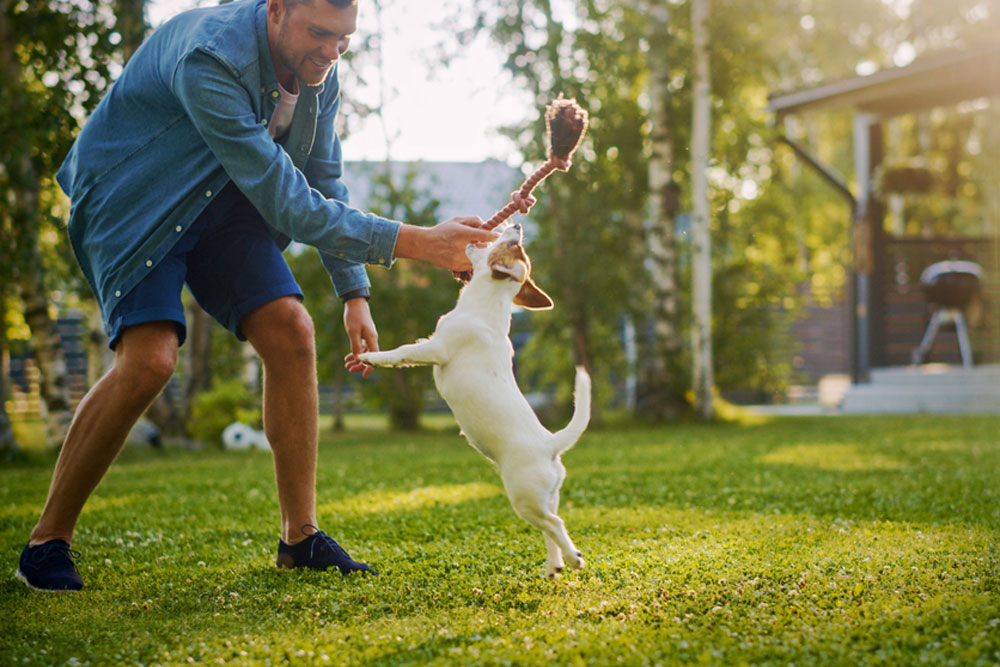We all know our pets need exercise, but sometimes figuring out the right kind of exercise, and how much, can feel like a daunting task. It’s not just about a quick walk around the block; it’s about creating enriching and engaging pet exercise routines that cater to your individual animal’s needs and breed characteristics. Think of it as designing a personalized fitness plan, but for your furry, scaled, or feathered companion. This article dives deep into the world of pet exercise routines, offering a comprehensive guide to help you keep your pet happy, healthy, and active.
Understanding Your Pet’s Exercise Needs Pet exercise routines
Before diving into specific routines, it’s crucial to understand that every pet is unique. A tiny Chihuahua will have vastly different exercise requirements than a Great Dane. Age, breed, health conditions, and even personality play a significant role in determining the appropriate level and type of physical activity. A playful kitten will naturally be more active than a senior cat with arthritis. A herding dog like a Border Collie will need more mental stimulation and physical exertion than a lap dog like a Pekingese.
Consider your pet’s breed. Breeds were often developed for specific purposes, and those purposes often dictate their energy levels and exercise needs. For example, retrievers were bred to fetch, so they often enjoy games involving retrieving balls or frisbees. Terriers were bred to hunt small animals, so they might enjoy digging or chasing after toys that mimic prey. Understanding your breed’s history can give you valuable insights into their natural instincts and how to channel those instincts into positive and productive exercise.
Don’t forget about your pet’s age. Puppies and kittens are bundles of energy and require frequent, short bursts of activity. As they mature, their exercise needs might change. Senior pets often require less intense exercise, but regular activity is still crucial for maintaining joint health and preventing muscle loss. Consulting with your veterinarian is always a good idea to get specific recommendations for your pet’s age and breed.
Designing Effective Pet Exercise Routines
Creating effective pet exercise routines isn’t just about tiring your pet out; it’s about providing them with both physical and mental stimulation. Think about incorporating a variety of activities to keep things interesting. Just like humans, pets can get bored with the same routine day after day.
Variety is key. Mix up your pet’s exercise routine with different activities like walks, runs, playtime, and even training sessions. This not only keeps them physically fit but also mentally engaged. A bored pet can become destructive or develop behavioral problems. Enrichment activities, like puzzle toys or snuffle mats, can also be incorporated into their daily routine to provide mental stimulation.
Consider the environment. Where you exercise your pet is just as important as what you do. A dog park can be a great place for socialization and off-leash play, but it’s important to make sure it’s a safe and enclosed area. When walking your dog, choose routes that are safe and free from hazards. Be mindful of the weather conditions and avoid exercising your pet during the hottest part of the day.
Consistency is also crucial. Just like humans, pets thrive on routine. Try to establish a regular exercise schedule and stick to it as much as possible. This helps your pet understand what to expect and can also help prevent behavioral problems. Even short, regular exercise sessions are better than long, infrequent ones.
Specific Exercise Ideas for Different Pet exercise routines
While general guidelines are helpful, let’s explore some specific exercise ideas for different types of pets.
Dogs: Walking is a staple for most dogs, but it’s important to tailor the length and intensity of the walk to your dog’s breed and fitness level. For high-energy dogs, consider adding in runs, fetch, or even agility training. Swimming is also a great low-impact exercise for dogs, especially those with joint problems. Don’t forget about mental stimulation. Training sessions, puzzle toys, and scent work can all be great ways to exercise your dog’s mind.
Cats: Cats are often perceived as being less active than dogs, but they still need regular exercise. Interactive play is key for cats. Use toys like feather wands, laser pointers, or even crumpled-up pieces of paper to engage their natural hunting instincts. Cat trees and scratching posts provide opportunities for climbing and scratching, which are also important forms of exercise. Short, frequent play sessions are often more effective than long, infrequent ones.
Small Animals: Small animals like rabbits, guinea pigs, and hamsters also need regular exercise. Provide them with spacious enclosures that allow them to run, hop, and explore. Offer them toys and enrichment activities to keep them mentally stimulated. Supervised playtime outside of their cages is also important.
Birds: Birds need opportunities to fly to maintain their physical and mental health. Provide them with a large cage that allows them to spread their wings. Regular out-of-cage time is also crucial. Supervise your bird during out-of-cage time to ensure their safety.
Reptiles: Reptiles have varying exercise needs depending on the species. Some reptiles are relatively sedentary, while others are more active. Provide them with an enclosure that mimics their natural habitat and allows them to engage in natural behaviors like climbing, burrowing, or swimming.
Monitoring Your Pet’s Progress
As you implement these pet exercise routines, it’s important to monitor your pet’s progress. Are they showing signs of fatigue too quickly? Are they gaining or losing weight? Are they showing any signs of pain or discomfort? These are all important questions to consider.
Pay attention to your pet’s body language. Are they panting excessively? Are they limping? Are they refusing to participate in activities they normally enjoy? These can all be signs that they are being overexerted or that they are in pain. If you notice any changes in your pet’s behavior or physical condition, consult with your veterinarian.
Regular veterinary checkups are also important for monitoring your pet’s overall health and fitness. Your veterinarian can help you assess your pet’s exercise needs and can also identify any potential health problems that might affect their ability to exercise.
Making Exercise Fun for Both of You
Ultimately, exercise should be an enjoyable experience for both you and your pet. Find activities that you both enjoy and that fit into your lifestyle. Whether it’s a leisurely walk in the park or an energetic game of fetch, the most important thing is that you’re spending quality time together and keeping your pet active and healthy. Remember, a tired pet is often a happy pet. And a happy pet makes for a happy owner. So, get out there and start exploring different pet exercise routines with your furry, scaled, or feathered friend!


:max_bytes(150000):strip_icc()/GettyImages-1269678249-2000-6932dd3094844fecaea01402122c8ec5.jpg)